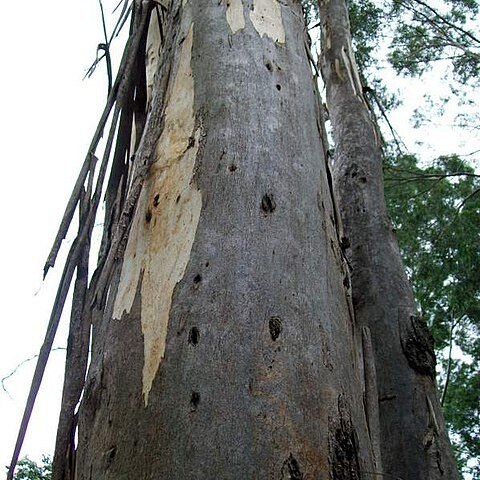Tree to 30 m high. Bark smooth throughout, white, grey, blue-grey or green-grey. Juvenile leaves broadly lanceolate to orbicular, green, concolorous. Adult leaves lanceolate to broadly lanceolate, acuminate, firm; lamina 10–20 cm long, 1.5–3 cm wide, green; lateral veins at 35°–45°; intramarginal vein up to 2 mm from margin; petiole terete or channelled, 14–24 mm long. Umbels 7–15-flowered; peduncle flattened or angular, 7–15 mm long; pedicels absent or terete, to 8 mm long. Buds conical; operculum conical, 7–9 mm long, c. 4 mm wide; hypanthium hemispherical, 2–3 mm long, c. 4 mm wide. Fruits hemispherical or ovoid, 3–5 mm long, 3–6 mm wide; disc broad, ascending; valves 3–5, strongly exserted. Seeds brown-black. [For more recent description see subspecies profiles-Editor]


